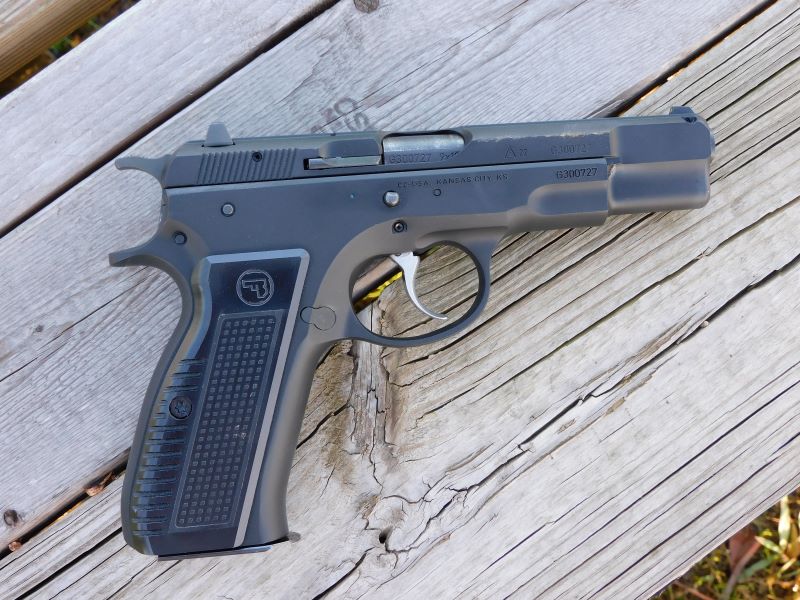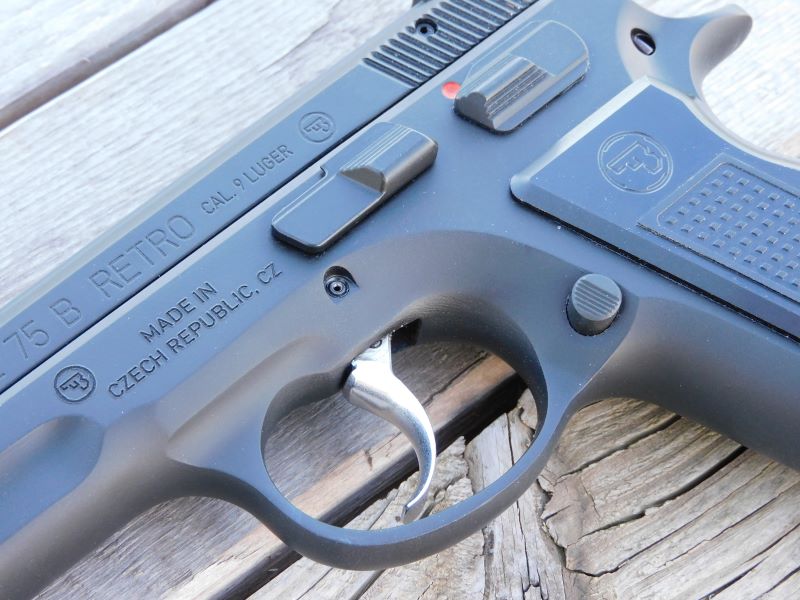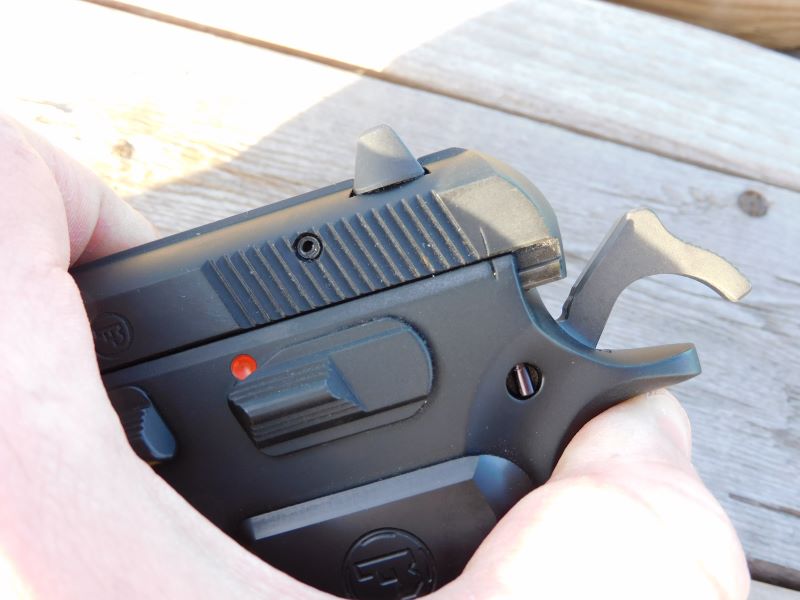Although they lack the cache of many American brands, CZ has been at the cutting edge of firearms design for over 100 years. CZ offers a variety of elevated and modern polymer-framed striker-fired pistols but the company sells far more models based on its most famous design — the CZ 75.
The CZ 75 is almost 60 years old, and it was among the first high-capacity 9mm handguns to hit the market. CZ makes different models that cover concealed carry to competition shooting, but the limited-edition CZ 75B Retro is a handsome, functional piece and a great nod to a groundbreaking Wonder Nine.
The Launch of the CZ 75
František Koucký was one of the more prolific engineers at CZ in the decades following the end of the Second World War before his retirement in the 1960s. But in 1969, the firm tempted him back to design a new pistol built around the 9x19mm cartridge.
For students of the Cold War, this new task seems odd. Czechoslovakia was a socialist state and a member of the Warsaw Pact. The Czechoslovak Army nominally used the same 7.62 Tokarev and 9×18 Makarov pistol ammunition that other Warsaw Pact countries used. Internal arms possession was curtailed and autarky served in the place of free trade.
But the Czechs have a storied history of exporting arms despite international embargo. China in the 1920s. Israel in the 1940s. Now in the 1970s, CZ wanted to produce a pistol for export — a pistol chambered in the NATO standard 9×19. Koucký aimed high by leaning heavily design-wise on the Browning Hi-Power.
The resulting CZ 75, as it was finished in 1975, aesthetically looks like a Hi-Power. It also mechanically functions like one. It also borrowed heavily on the Hi-Power’s 13-round double-stack magazine. But the CZ 75 holds 16 rounds, and it is double action, alleviating some of the problems of the older design.
It hit the commercial market in 1976 and over the next several years would be joined by other designs like the Beretta 92, the Steyr GB, and the Glock 17.
The CZ 75B Retro: A Replica, But Not A Replica
The 75B is CZ’s flagship handgun and has been in production since 1998. CZ also produces compact and competition-ready versions of this model. From time to time, CZ produces runs of the 75B in the same configuration as the original CZ 75.
In 2021, CZ introduced the 75B Retro.

The CZ 75B Retro borrows the same lines and overall design as the original when it came out in 1975 with a few key differences. Original CZ 75s did not have a firing pin block, nor did it have a half-cock notch. Both were added in later years to make the model drop-safe and allow the user to manually de-cock the pistol safely.
Likewise, the original 75s had a long slab-sided dustcover that matched the slide, which was shortened later on. These later features carry on to the CZ 75B Retro. A narrow, spurred hammer and waffle-style black aluminum grips were carried over as seen on the original.

Functionally, the Retro is indistinguishable from the original or the later CZ 75B. It is a full-sized all-steel handgun that tips the scales at 41.5 ounces fully loaded. It is a locked breech pistol with a 4.6-inch barrel that locks into grooves on the inside of the slide, just like the Browning Hi-Power.
Unlike that handgun, the Retro is a double-action/single-action handgun that can be fired by a long pull of the trigger that cocks the hammer and releases it. Subsequent shots are single action and require a light pull of the trigger because the hammer is automatically re-cocked by the slide.
The Retro has a button-style magazine release and a slide release on the left side of the pistol as well as a manual safety. The safety can be activated with the hammer cocked so the pistol can be carried cocked and locked. Unlike the later CZ 75BD, the safety cannot be used to de-cock the pistol.
The top of the slide is milled to cut sun glare and has a pair of three-dot sights. The front sight is pinned and replaceable, while the rear sight is dovetailed and adjustable for windage. Although it was not advertised, my Retro has tritium three-dot sights that glow dimly in low light.
The CZ 75B Retro ships in a hard case with two magazines: an all-steel Mec-Gar 16-round magazine and a 17-rounder with a polymer floor plate. I paid a hair over $900 for this limited-edition Retro, but aside from a few additions, it is functionally identical to a standard CZ 75B that goes for much less.
Disassembling the CZ 75 Retro
The CZ 75B Retro disassembles like any double-action pistol in their lineup. If you are familiar with the Colt M1911 or the Browning Hi Power, there is some cross-over. With the magazine removed and the chamber clear, draw the slide back slightly to align the disassembly witness marks on the slide and the frame.

From there, you can push the slide release from the right side and pull it out of the frame. With the slide release out of the pistol, the slide can be removed, followed by the recoil spring and guide rod assembly, and the barrel. Most modern pistols have barrels that lock up into the ejection port of the slide, but the Retro harkens back to old Colts and Hi-Powers with barrel lugs that lock into the slide itself. A bit old-fashioned, but it works.
If you are new to CZs, it becomes obvious during the disassembly why they are different. The slide rides in rails inside the frame rather than on top of the frame. This makes the slide seem smaller than it actually is when the pistol is together. But having the slide set further down into the frame results in a lower bore axis, which puts felt recoil into the palm of your hand rather than over your hand, resulting in less muzzle rise from shot to shot.

Shooting Impressions
If you are used to shooting polymer-framed pistols, shooting the CZ 75B is pistol shooting in easy mode. If you are a new shooter looking to step up from a rimfire pistol, you might consider the CZ too. This all-steel pistol feels like a chunk in the hand and that is not helped by the tactile, yet metallic aluminum grip panels. This, combined with the CZ’s low bore axis, translates to very little felt recoil and muzzle rise.
In my brief time with the CZ 75B Retro, I have put 500 rounds of ammunition through it. Ammunition ranged from 115-grain Winchester White Box FMJ powder-puff target loads to Hornady Critical Duty 135-grain +P defensive loads.
Recoil along this gamut of ammo was indistinguishably mild. Reliability was excellent, aside from two failures to feed when firing the first magazine’s worth of ammunition through the pistol.

Ergonomically, the Retro is not set up for lefties like me, but it sits perfectly for right-handed shooters, particularly if you have larger hands that can work around the grip. The magazine release, slide, release, and safety are all within easy reach of the thumb and engage positively.
Although the Retro asks a lot of my non-dominant hand, I initially selected it for its looks and trigger. Compared to a stock CZ 75B and other double-action pistols like the Beretta 92, the Retro has a predictable and smooth trigger pull.
The double-action pull is long, but smooth with no snagging as the hammer travels rearward. It is like a good revolver trigger and breaks at eight pounds, although it feels less than that. The single-action pull has a quarter-inch of take-up and breaks at three and a half pounds.
The three-dot sights are neither too small to pick up for follow-up shots nor too large for target shooting. At 15 yards, I could reliably put five rounds into a three-inch cluster shooting offhand. Hitting half-sized steel silhouettes and eight-inch plates at 30 yards was never a problem.

There were a few downsides as it relates to the shooting the CZ 75B, or at least, downsides that might be more applicable for some shooters over others. The safety does not double as a de-cocker so you have to press the trigger in order to lower the hammer safely. But if you take your finger off the trigger after you start riding the hammer down, it will fall safely into the half-cock notch. The spur hammer is an excellent addition that makes the process easier over the loop hammer on current CZ models.
Manual de-cocking is easy with practice, but both new and old shooters might not cotton to the CZ’s low-riding slide. Because the slide rides in the frame, rather than over it, there is not as much to grab when manipulating the pistol. This is consequential if you have weak or slick fingers. Thankfully, being a full-sized pistol, there is more to hang onto than a typical compact or micro-compact handgun.
The CZ 75B Retro: The Version They Should Keep Making
CZ makes a version of the CZ 75 to suit just about anyone. From polymer frames to optics cuts to weapon light rails, there is something for everyone. The CZ 75B is an all-steel gun that casts away all those other features and the CZ 75B Retro eschews some of the traditional 75B features by going back in time even further.
The Retro is a homage to one of the original Wonder Nines, to a time when features as simple as a double-stack magazine were a bug rather than a feature. But this homage does so much more. It combines some of the needed safety features of the B model with functional aspects of the original to become the version that CZ should make standard once again.









